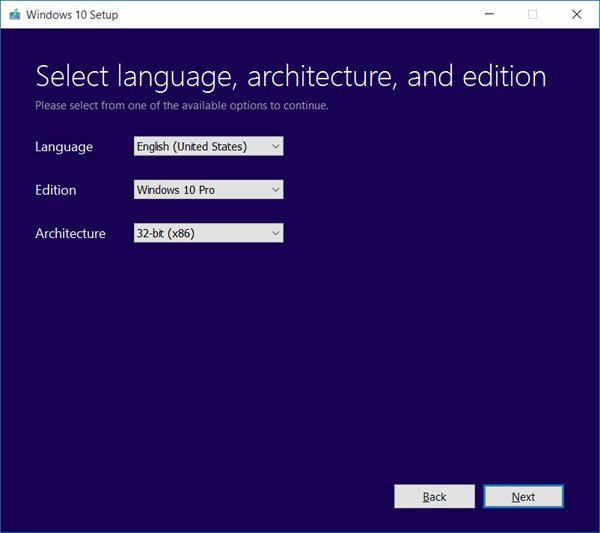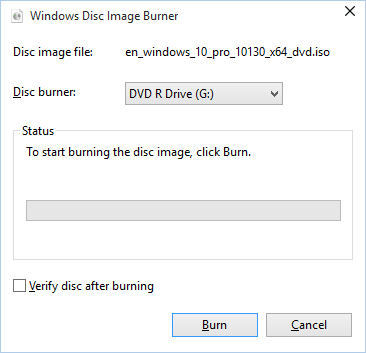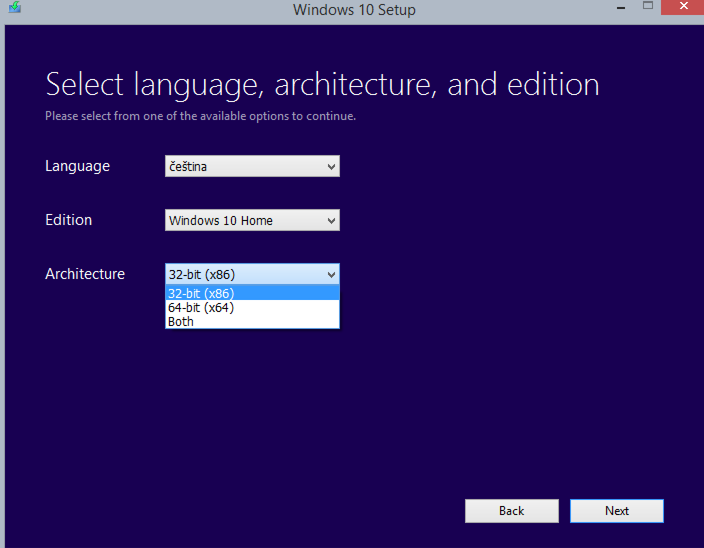When Media Creator asked me if I wanted to setup as 64-bit or 32-bit or both, I chose both. Now I'm trying to upgrade, and it says "get the disc that says 64-bit". Do I have to totally recreate the media as just 64 bit?
May 10, 2024
Contribute to the Windows forum!
Click here to learn more 💡
May 10, 2024
Windows 10 Forum Top Contributors:
Ramesh Srinivasan - neilpzz - Volume Z - franco d'esaro - _AW_ ✅
Installed Windows 10 media to USB as "Both" (64 bit and 32 bit). Windows 7 asking for 64 bit. Can I run media as 64 bit?
Report abuse
Thank you.
Reported content has been submitted
Andre
twitter/adacosta
groovypost.com
Report abuse
Thank you.
Reported content has been submitted
11 people found this reply helpful
·Was this reply helpful?
Sorry this didn't help.
Great! Thanks for your feedback.
How satisfied are you with this reply?
Thanks for your feedback, it helps us improve the site.
How satisfied are you with this reply?
Thanks for your feedback.
Report abuse
Thank you.
Reported content has been submitted
4 people found this reply helpful
·Was this reply helpful?
Sorry this didn't help.
Great! Thanks for your feedback.
How satisfied are you with this reply?
Thanks for your feedback, it helps us improve the site.
How satisfied are you with this reply?
Thanks for your feedback.
There is no such option, you either choose 32 or 64 bit.
How to create a ISO or USB drive.
Select Create installation media for another PC then click Next
Choose your language, edition, and architecture then click Next
Please note: The copy of Windows 10 you download must correspond with the edition of Windows you are upgrading from, the architectures must correspond too (32 bit > 32 bit, 64 bit > 64 bit):
- Windows 7 Starter, Home Basic, Home Premium, Windows 8.0 Core, Windows 8.1 Core must use a Windows 10 Home ISO
- Windows 7 Professional, Windows 7 Ultimate, Windows 8.0 Pro, Windows 8.1 Pro
must use a Windows 10 Pro ISO
- Your currently installed copy of Windows must be activated. If it is not, you will be prompted to enter a product key, if you don't have one, you will have to Rollback and start again.
- You must perform an inplace upgrade, do not clean install. Learn more HERE
- If you are using Windows 7 Enterprise, Windows 8.0 Enterprise, Windows 8.1 Enterprise editions, or volume license Windows 7 Professional you won't be able to use the free upgrade offer.
I suggest you choose the .ISO file option, since you can reuse it for multiple options. Click Next
USB flash drive
If you have a thumb drive with 3 GBs of available space, you can use that to create a bootable copy. Thumb drives are very cheap these days, so pick up a couple and create one as your first backup option. This is especially recommended for persons using Ultrabooks which do not include optical drives (DVD) or Netbooks. There are some desktop systems that do not include one.
ISO file
An ISO file is a digital or virtual replica of a physical disc. In order to use an ISO you must burn it to a optical disc. In the case of Windows 10, a blank DVD. If you are using Windows 7, you can create the .ISO and burn it using the built in Disc Image utility. If you are running Windows XP or Windows Vista, you can using a third party burning tool such as ImgBurn or Roxio/Nero.
Creating a .ISO file
For the purposes of this exercise, we are gonna use the .ISO option.
Select ISO file, then click Save
Select your location and click Save.
Wait while the .ISO image is created.
Prepare Windows 10 ISO file
After you have downloaded the Windows 10 ISO, you need prepare it, this is especially important for Windows 7 users..
After obtaining the .iso file you can use the built in Disc Image burning tool or Microsoft .iso to USB/DVD tool to create a bootable DVD or USB (requires a blank DVD or USB flash stick of at least 4 GB).
After downloading the .ISO file, right click it and click Burn disc image
Insert a blank DVD
Click Burn
Windows 8/8.1 users can mount the .ISO file and start the upgrade automatically. Learn more here
Important:
If you are creating a bootable USB thumb drive, make sure the thumb drive is first formatted as FAT32.
Connect the thumb drive
Open Computer
Right click thumbdrive
Click Format
Make sure FAT32 is selected as the file system.
For UEFI based systems
If your computer is UEFI based, these are normally systems that come pre-loaded with Windows 8 or later, you will need to prepare the ISO file for such a configuration or you will receive an error message during setup. The thumbdrive needs to be formatted as FAT32 and use the GPT partitioning scheme. To do this, you need to use Rufus, a small tool you can download for free.

Rufus - credit: Pete Batard/Akeo
After you have installed Rufus:
- Launch it
- Select ISO Image
- Point to the Windows 10 ISO file
- Check off Create a bootable disk using
- Select GPT partitioning for EUFI firmware as the Partition scheme
- Choose FAT32 NOT NTFS as the File system
- Make sure your USB thumbdrive in the Device list box
- Click Start
- Close when complete
Andre
twitter/adacosta
groovypost.com
Report abuse
Thank you.
Reported content has been submitted
3 people found this reply helpful
·Was this reply helpful?
Sorry this didn't help.
Great! Thanks for your feedback.
How satisfied are you with this reply?
Thanks for your feedback, it helps us improve the site.
How satisfied are you with this reply?
Thanks for your feedback.
Both IS an option, and I'd selected it. I'll just restart the process though and only select 64-bit.
Report abuse
Thank you.
Reported content has been submitted
16 people found this reply helpful
·Was this reply helpful?
Sorry this didn't help.
Great! Thanks for your feedback.
How satisfied are you with this reply?
Thanks for your feedback, it helps us improve the site.
How satisfied are you with this reply?
Thanks for your feedback.
Try the setup located in the sources folder.
Report abuse
Thank you.
Reported content has been submitted
8 people found this reply helpful
·Was this reply helpful?
Sorry this didn't help.
Great! Thanks for your feedback.
How satisfied are you with this reply?
Thanks for your feedback, it helps us improve the site.
How satisfied are you with this reply?
Thanks for your feedback.
Question Info
Last updated April 15, 2024 Views 14,016 Applies to:









